Is your cat turning you into a makeshift scratching post? While it may seem intimidating (and sometimes painful!), climbing is actually just one of many ways cats express their natural instinct to explore and reign over their territory.
If your cat is climbing on things a lot, don’t worry. We have some ideas why they might be doing that and how you can help them. Continue reading to learn more about why cats climb and what you can do to keep them safe and healthy.
Why Does My Cat Climb Me Like A Tree?
Cats Need Affection and Attention
Cats are creatures of habit and love to feel secure in a familiar environment with the people they love. They typically show their affection and attention by climbing onto your lap or up on top of a bookcase, cabinet or other furniture.
Cats may also climb you as an expression of trust, familiarity or dominance. For cats that live in strictly indoor environments, climbing is an instinctual behaviour that helps them to explore their environment and feel closer to the people and things that they love. [2]
Cat Climbing Is Natural Behavior
Cats are natural climbers and have a strong instinct to climb trees, shelves, and furniture as a way of exploring their world and feeling safe. In the wild, cats would climb trees to escape predators and search for food.
Climbing also gives cats a sense of control over their environment as they can survey the area from above.
They Need a Cat Tree
Cats like to climb because it makes them feel safe and they can explore. If your cat climbs on you too often, it might be because they don’t have anything else to climb. Get a tall scratching post or cat tree for your cat to climb on. It will give them something to do and a place to sleep.
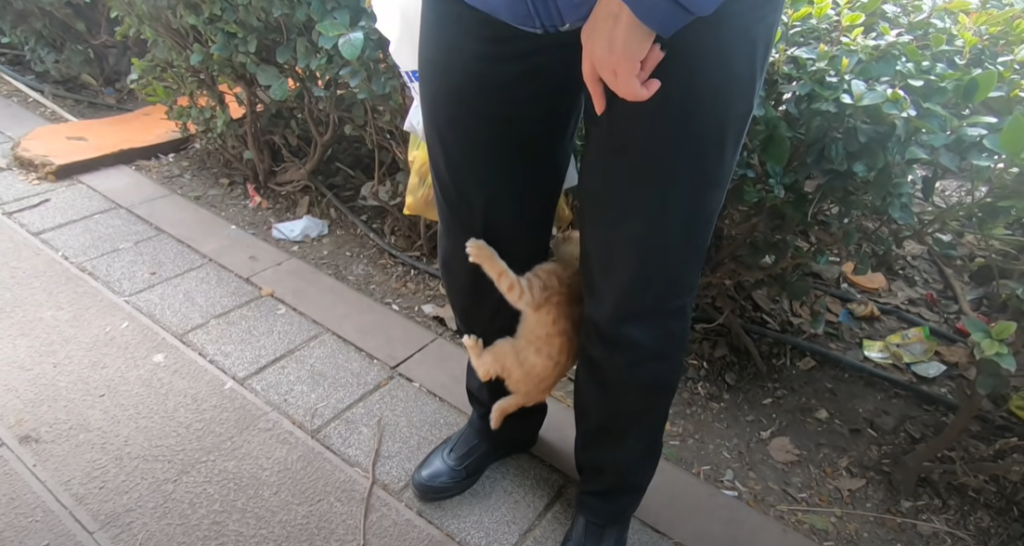
Provide Plenty of Stimulation
Cats are smart animals and need to do things to keep their minds active and healthy. Give them lots of toys to explore, chew on, or cuddle with.
Even simple things like paper bags, boxes, and paper towels can provide entertainment. You could also try playing interactive games with your cat like hide-and-seek or fetch.
Age and Health Problems
Sometimes cats climb you because they are elderly, have a health problem or don’t feel good.
If your cat is climbing excessively, it may be a sign of an underlying medical condition. Talk to your veterinarian and discuss ways to help your cat stay healthy and active.
Sharpening Their Claws
Your cat is probably climbing on you to sharpen their claws. This is not good for you. Make sure there are scratching posts around for the cat to use instead of your skin. Give the cat lots of praise and treats when they use the scratching post instead of you.
Asserting Dominance
Cats have an instinct to show that they are in charge of their territory. They do this by climbing on people. To stop this from happening, give the cat affection when it is not climbing on you.
Also, make sure there are other things for the cat to do and explore so it does not feel like it needs to be in charge all the time. [2]
What Does It Mean When a Cat Climbs On You?
When a cat climbs on you, it is showing that it likes and trusts you. Cats show their love by climbing onto your lap, shoulders or favorite furniture.
It is also an expression of dominance as cats naturally want to be in charge of their territory. Finally, it could be due to boredom and lack of stimulation in the home environment.
You might also want to clip their nails so they don’t scratch you by accident when they are climbing on you. [1]
Why Does My Cat Like to Climb My Legs?
Cats like to climb your legs because it helps them feel connected to you and close to their favorite person. Climbing is also a way for cats to assert their dominance and show that they are in charge of the home.
Finally, cats may climb your legs out of boredom or lack of stimulation if there are no other objects for them to explore.
It is important to provide plenty of stimulation and toys for your cat. This will keep them entertained and reduce the need to climb on you.
You can also give them affection when they are not climbing on you, as this will help reinforce the positive behaviour. Additionally, make sure their nails are clipped regularly so that it does not hurt when they climb on you.
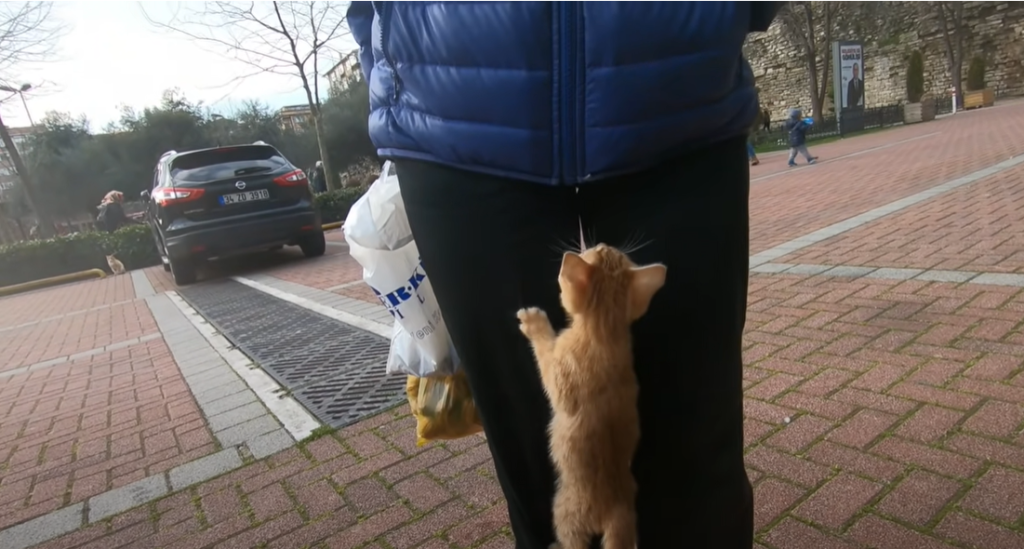
How to Stop Your Kitten from Climbing on You?
If your kitten is being too active and climbing on you too often, there are some steps you can take to stop them.
Spend Time with Your Cat
Spend time with your cat and make sure they get plenty of playtime with you. This will help them bond with you and give them something to do instead of climbing on you all the time.
Find a Cat Tree
Find a cat tree or scratching post for your kitten to climb and explore. This will give them an outlet for their energy and can help keep them off of you. [3]
Provide Toys
Make sure there are plenty of toys around the house for your kitten to play with. This can keep them entertained and reduce the need for them to climb on you.
Buy a Cat Scratcher
Buy a cat scratcher for your kitten to use instead of you. This can help them get their scratching needs met without using your skin as an outlet.
Give Praise and Treats
Whenever your kitten does not climb on you, give them praise and treats to reinforce the positive behaviour. This will also make it more likely that they won’t climb on you in the future.
Give It Time
Be patient. It may take some time for your kitten to adjust to their new environment and learn not to climb on you. If you are consistent with the methods mentioned above, it will become easier over time.
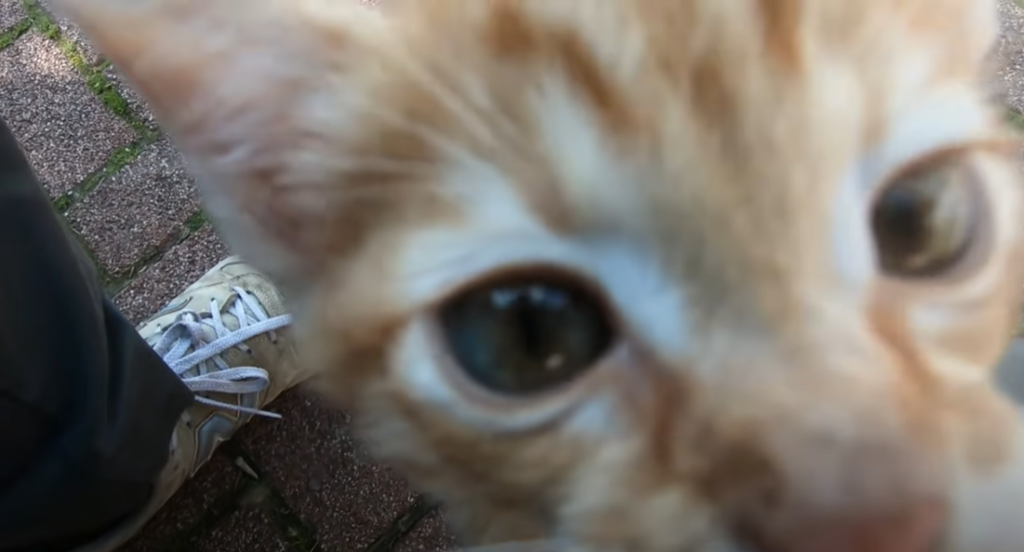
FAQ
Why do cats climb their owners?
Cats sometimes climb on their owners to show they like them, or because they are bored. If you have a cat, it is important to give the cat things to do so it does not get bored.
You can also pet the cat when it is behaving well to reinforce good behaviour. Additionally, make sure their nails are clipped regularly so that it does not hurt when they climb on you.
Should I let my cat climb me?
It is up to you if you want to let your cat climb on you or not. Most cats find climbing on their owners relaxing and comforting, but if it becomes too much for you then it is ok to set boundaries.
How do you know if a cat has imprinted on you?
There are some things that may mean your cat likes you a lot. They include following you around, always staying close, wanting to be near you all the time, and showing affection even when you are not petting them. If your cat does these things, it may have imprinted on you.
Cats and their owners have a special relationship. If you understand why your cat climbs on you like a tree, you can make the relationship even better.
With time, patience, and careful training, you can stop unwanted behaviors while still giving your cat enough stimulation.`
Why do cats lick their owners?
Cats show affection by licking their owners. This is also how they clean them. Licking makes cats feel good because it releases endorphins.
If your cat is licking you too much, try to get their attention with another toy or activity. You can also give them a treat when they don’t lick to reinforce the behaviour you want.
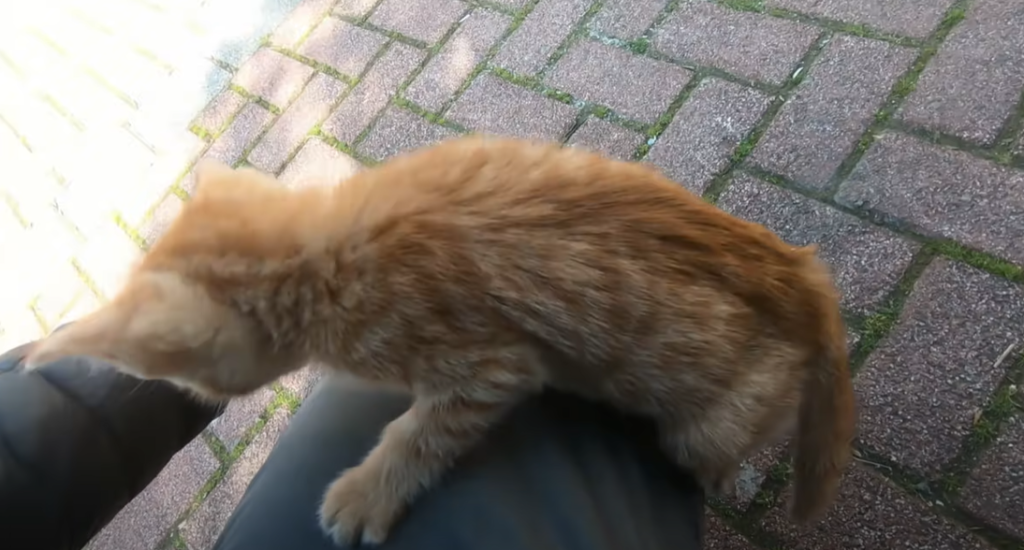
How do cats say sorry?
Cats can show they are sorry by giving their owners head butts, licking them, or offering up toys. They may also just sit next to you and purr.
It is important to be understanding and forgive your cat when it does something wrong so that the bond between you remains strong.
Does a cat trust you if it sleeps next to you?
Yes, if your cat sleeps next to you it is a sign of trust. Cats like to sleep in places they feel safe and comfortable.
By sleeping near you, your cat is showing that it trusts and loves you. When cats are feeling stressed or scared, they may hide instead of seeking comfort from their owners.
What does it mean when a cat rubs against you?
When a cat rubs against you, it is usually showing that it likes you. Cats have scent glands in their face that they use to mark their territory and people they like.
So when your cat rubs its head on you, it is marking you as part of its clan and showing love. This gesture is usually accompanied by purring which is also a sign of contentment.
What does it mean when a cat follows you around?
When a cat follows you around, it is usually showing affection or seeking attention. Cats often like to be where the action is and will follow us from room to room. They may even rub against our legs or meow to let us know they are there.
If your cat is following you too much, try to redirect its attention with a toy or treat to reinforce the behavior you want.
Does a cat show affection when it purrs?
Yes, cats usually purr to show contentment and that they feel safe. This is often accompanied by other signs of love such as kneading or following their owners around the house. If your cat is purring while being petted, it is likely expressing its affection for you.
Additionally, cats may also purr to comfort themselves in stressful or unfamiliar situations. By understanding the reasons why your cat is purring, you can better understand your cat and strengthen the bond between you two.
Do cats understand when you talk to them?
Yes, cats can understand some words and phrases. They also use body language to communicate with us. If your cat looks at you or meows in response to something you said, it is likely they understood what was said.
Cats also pick up on tone of voice and may respond more positively if a kind and gentle voice is used. By understanding how cats communicate, you can better understand your cat and strengthen the bond between you two.
Does a cat like to be petted?
Yes, cats usually like when you pet them and stroke them. This is how they show that they like you. If your cat likes being petted, it might roll around or make a soft sound called purring.
Some cats will even head-butt you, which is another sign that they like being touched. In general, cats only like to be petted in areas where they are relaxed.
This is why it’s important to watch your cat’s body language and only pet them when they look like they want to be petted.
Can cats become jealous?
Yes, cats can become jealous when they feel that their owners are paying too much attention to someone or something else.
This usually manifests itself in behaviors such as following the person around, rubbing against them, or meowing loudly. If your cat is displaying these kinds of behaviors, it may be a sign that it is feeling jealous and needs more attention.
The best way to deal with jealousy in cats is to give it extra love and attention and make sure that it knows that it is still the centre of your world.
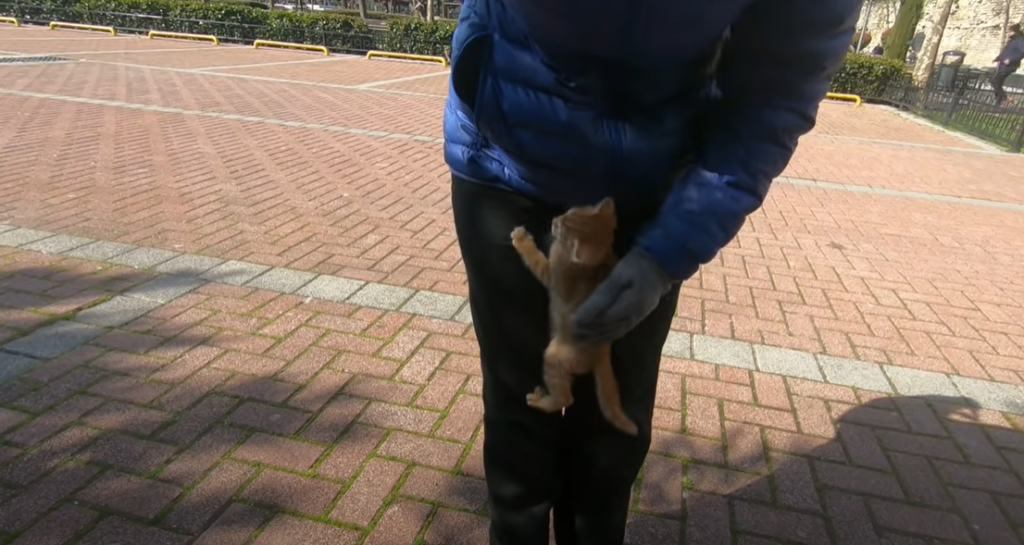
Does a cat show affection by licking you?
Yes, cats may show their affection for their owners by licking them. This is usually seen as a sign of trust and love. Cats’ tongues are covered in tiny barbs called papillae which help them groom themselves and other cats.
So when they lick us, they may be trying to groom us or show their affection. If your cat is licking you, take it as a sign that they like and trust you.
Is it true that cats like to sleep in high places?
Yes, cats often like to sleep in high places as they feel more secure and can observe their surroundings from a safe vantage point. This behavior is known as “perching” and it allows cats to survey their environment for potential threats or prey.
If your cat is sleeping in high places, it is likely feeling secure and comfortable in its environment. Additionally, cats may also enjoy the warmth of high places where sunlight can reach them more easily.
Are cats more active at night?
Yes, cats usually sleep during the day and are awake at night. They may become more active after dark because they want to hunt or explore their surroundings.
If your cat is regularly active at night, it is likely following its natural instincts and trying to fulfil its need for stimulation and exploration. Additionally, cats may also become more active during the night if they feel that it is a safe time to do so.
Why Does My Cat Climb Me Like a Tree?
Your cat may climb on you like a tree because it feels secure and comfortable. It is also possible that your cat is trying to show its affection for you by rubbing against you and purring.
Some cats even enjoy being petted in this position as it gives them an opportunity to bond with their owners. When your cat climbs on you like a tree, it is likely feeling safe and secure in its environment and trying to show its affection for you.
Which areas of the body should I pet my cat?
It is important to only pet your cat in areas where they are relaxed. This usually means that you should focus on their head and neck. You may also want to stroke their back and tail area, but pay attention to how your cat responds to being touched and only pet them in areas where they seem comfortable.
Additionally, cats may also enjoy having their belly rubbed, so you can try this as well if your cat seems receptive to it. Just make sure that you are always gentle and pay attention to how your cat is reacting to being petted.
Useful Video: How To Rescue A Cat From A Tall Tree
Conclusion
Cats are fascinating creatures. They do things that we don’t expect, like scratch us or meow a lot. It might seem strange that they climb up us like trees, but it’s actually quite normal!
Cats do this for both physical and emotional reasons. It makes them feel safe and secure. So next time your cat uses you as a scratching post, remember that this is their way of showing affection and feelings of security. Plus, let’s be honest – it’s kind of cute.
If you want your cat to be happy, make sure they have a lot of scratching posts or other ways to express themselves. This will stop them from clawing up your furniture or clothes and help keep them healthy by making them exercise and relieving stress.
References:
- https://arew.org/why-does-my-cat-climb-me-like-a-tree/
- https://www.hepper.com/why-does-my-cat-climb-me/
- https://excitedcats.com/why-does-my-kitten-climb-me-like-a-tree/


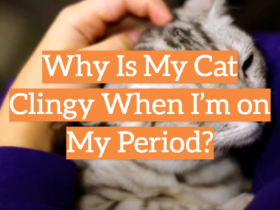

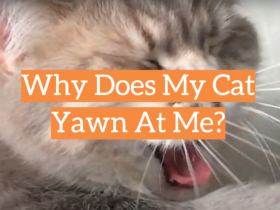

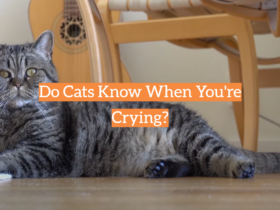

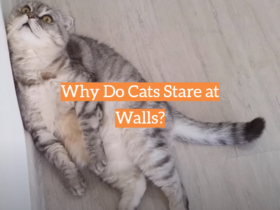

It’s a daily struggle in my household as well! My cat’s tree-climbing antics have become a routine that never fails to entertain and baffle me. After some research and discussions with my vet, I’ve come to understand that climbing is an inherent behavior in cats. In the wild, they would climb trees for various reasons, such as hunting, escaping predators, or even just to get a better vantage point. So, when my furry friend scales me like a tree, it might be their way of expressing natural instincts. It’s almost like they see us as their personal, non-leafy climbing structures.
My cat’s tree-climbing escapades have given me a fair share of scratches, but I’ve learned that it’s not always about playfulness. Cats are incredibly territorial creatures, and climbing can be a way for them to mark their territory. When my cat climbs onto me, it’s like a feline declaration of ownership, as strange as it may sound. It’s their way of saying, “This human belongs to me.” While it might be a bit uncomfortable for us, it’s heartwarming to think that they see us as part of their territory.
Climbing might also be a sign of affection. Cats show their love in peculiar ways, and for some, scaling their humans is their version of a warm hug. I’ve noticed that my cat tends to climb me more when they’re seeking attention or reassurance. It’s like they’re reaching out for a physical connection, a bonding experience that transcends the usual head nudges or purring.
It’s intriguing how cats view us as their personal climbing gym, isn’t it? Beyond instinct and territory, climbing can be a manifestation of curiosity. Cats are naturally curious creatures, and climbing provides them with a unique perspective on their surroundings. So, when my cat turns me into a human jungle gym, it might just be their way of exploring the world from a different vantage point—literally.
One thing I’ve come to appreciate is that cat behavior is diverse, and climbing serves various purposes. Sometimes, my cat climbs me when they’re feeling playful and want to engage in interactive play. It’s a way for them to release excess energy and have a bit of fun. Understanding that climbing is a multi-faceted behavior has helped me appreciate these moments, even when I find tiny claws in my clothes. After all, it’s a small price to pay for the joy and companionship of my feline friend.
My cat turning me into a human tree has become a comical part of our daily routine. Beyond the instinctual and affectionate aspects, I’ve noticed that climbing can also be a form of communication for my furry friend. When they want something or feel a bit demanding, up they go. It’s like their way of saying, “Pay attention to me!” Understanding this aspect has made our interactions more amusing and has helped me decode some of their feline messages.
Ever wondered why cats seem to have an affinity for elevated spaces? I’ve found that climbing serves a practical purpose too. In the wild, being elevated provides a sense of security and helps them keep an eye on their surroundings. So, when my cat climbs me, it might be their way of seeking a safe and elevated spot, especially if they’re feeling a bit anxious or uncertain. It’s fascinating how their instincts play a role even in our cozy indoor environments.
It’s interesting how cat climbing habits can vary based on their individual personalities. Some cats are more prone to climbing, while others may not show this behavior as much. In my experience, understanding my cat’s unique personality has shed light on why they climb. For my adventurous and playful cat, climbing is an exciting and natural expression of their personality. It adds a layer of uniqueness to our bond, as each climb becomes a reflection of their distinct character.
One aspect of cat climbing that surprised me is the role it plays in maintaining their physical health. Cats need regular exercise to stay healthy, and climbing provides a great workout. So, when my cat turns me into their personal climbing apparatus, it might be their way of staying active. It’s a reminder of the importance of physical activity for our feline companions and adds a health-conscious perspective to the whole climbing phenomenon.
As a cat owner, I’ve come to appreciate the dynamic nature of the human-cat relationship. My cat’s penchant for climbing is a constant reminder that, despite the domestication, they still retain their wild instincts. It’s a small window into their natural behaviors and a connection to their ancestral roots. So, when my cat transforms me into a makeshift tree, it’s like a playful nod to the untamed spirit that still resides within them.
Cat climbing behavior is a source of endless amusement in my household. Beyond the instinctual reasons, I’ve noticed that my cat climbs me as a way to seek warmth. Cats love cozy and warm spots, and my body seems to provide the perfect elevated, warm perch. So, when I become a human tree, it’s like my cat has found a living, mobile heat source. It adds a whole new dimension to the idea of “cuddling.”
It’s intriguing how cat climbing habits can also be linked to their need for a sense of security. When my cat scales me like a tree, it’s like they’ve found a refuge. This behavior is particularly noticeable when they encounter something new or unfamiliar in the environment. Turning me into a climbing structure seems to be their way of seeking reassurance and asserting control over their surroundings.
The climbing phenomenon took an interesting turn when I discovered that it could be a sign of boredom. Cats are intelligent beings, and when they lack mental stimulation, they might resort to climbing as a way to alleviate boredom. Recognizing this has prompted me to introduce more interactive toys and activities into our daily routine, providing my cat with the mental engagement they need.
For my cat, climbing is not just a physical activity but also a form of self-expression. It’s amazing how they communicate their emotions through this behavior. When they’re in a playful mood, the climbs are energetic and acrobatic. If they’re feeling a bit low-energy or sleepy, the climbs are slower and more deliberate. It’s like a non-verbal language, and deciphering it has deepened my understanding of their emotional world.
While the climbing can sometimes catch me off guard, I’ve realized that it’s also a testament to the trust my cat has in me. Climbing requires a level of trust and confidence, and when my cat turns me into their personal climbing structure, it’s a demonstration of the bond we share. Knowing that they feel secure and comfortable enough to use me as their perch is a heartwarming affirmation of our strong connection.